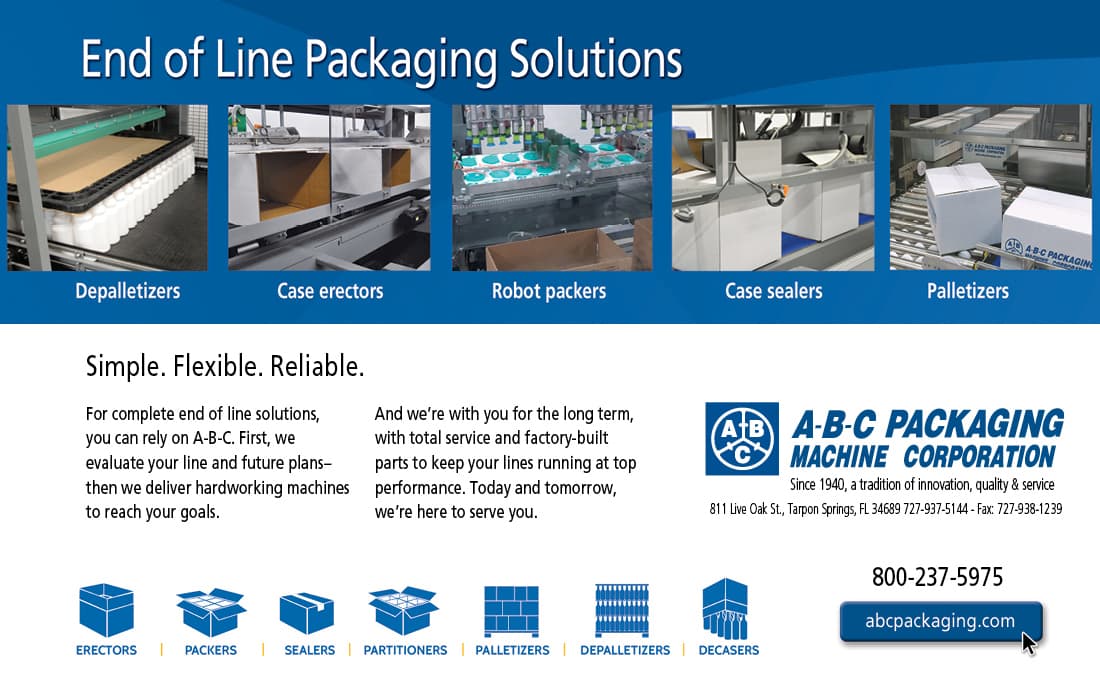

Improving the Quality and Safety of Food with Smart Packaging
A higher quality, more sustainable supply chain needs the integration of smart packaging.
By Hanna Marcus
For a food item to reach a consumer’s fork from the farm, a vast number of steps need to be taken in a complex supply chain. From harvesting and processing to packaging and distributing, the process behind the cereal in the cabinet is far more involved than most people ever realize.
To ensure each food item is of appropriate quality and safety, standards have been implemented, and much care and innovation have been dedicated to progressing packaging. Creating a smarter, more sustainable food supply chain has always been a process of advancement and revision.
Now, technological advancements have unlocked even more packaging potential.

Using a smart phone to check a QR code for food safety information.
ADVERTISEMENT
Technologies used in Food Packaging
Technology has created new opportunities when it comes to efficient, safe packaging that can aid in the process of getting food products from farm to fork, preserving such items and significantly reducing waste. Typically, these smart packaging technologies are broken down into two categories — intelligent packaging and active packaging.
Intelligent packaging’s primary purpose is to monitor the status of the product by measuring and interpreting both internal and external factors. This information is then related to an external interface, allowing changes to be made to the supply chain if necessary. Intelligent packaging uses a variety of technologies, such as ripening indicators, gas detectors and radio frequency identification devices.
Active packaging, on the other hand, is technology that can respond to the environment and the information relayed by intelligent packaging. Such packaging is used to actively adapt to changing conditions, thereby maintaining the quality of food products and ensuring that they stay fresh throughout the various stages of the supply chain. The technologies associated with this form of packaging include built-in systems used to avoid spoilage, such as those that can either absorb or release substances that affect freshness.

Safely packaging orders at a food delivery service.
How Intelligent and Active Packaging Helps
Loss of food during the processes between production and consumer is a tremendous problem that leads to excessive waste. A disturbingly high percentage of the world’s food supply is lost each year, in part due to packaging-related issues.
With the information generated by intelligent packaging, more insight can be gained into where the most waste is generated, what contributes to said waste and what steps can be taken to address the problems. This information is invaluable when it comes to developing the next generation of food packaging and rethinking the supply chain to be more efficient.
Intelligent packaging also helps pinpoint opportunities for active packaging to make a tangible difference in the supply chain. For example, more advanced temperature-controlled environments can be implemented to not only help preserve perishable foods but also work toward sustainability by using the latest energy-efficient technologies. Other packaging technologies, such as designs that incorporate new, more effective materials, are also being used to ensure food waste is reduced worldwide.

Marbled beef steak in a vacuum pack.
The Challenges of Integrating Smart Packaging
There is little doubt that smart packaging is the future of the food supply chain. However, there are several challenges looming between the technologies being developed and the integration of these technologies into the supply chain in any meaningful manner.
The spoilage of food is anything but simple and can be induced and promoted by a variety of factors. As such, technologies may be able to reduce certain causes of food waste, but significant advancement is needed before each cause of waste can be addressed.
Even when these technologies are developed and made available, integrating them into the supply chain will be exponentially challenging due to the scope, scale and complexity of the global network. The food supply chain is so well-established that altering very key elements of its existence would take substantial time and commitment.
Further, smart food packaging can be cost prohibitive. While food waste is a massive drain on the monetary side of the food industry — not to mention the humanitarian impacts — the cost of smart packaging may currently outweigh the benefits, like reduction in food waste. Therefore, many of the technologies associated with smart packaging need to be more readily available and affordable in order to be widely embraced.
Smart packaging is undoubtedly an integral piece to the puzzle of a safer, more efficient food supply chain. As more technologies are developed and existing options become more cost effective, the integration of smart packaging will become more common, and the world will see a higher quality, more sustainable supply chain emerge.
Hanna Marcus is a professional writer with a degree in journalism from the University of Florida. After spending a few years in newsrooms across the state of Florida, she found her niche in freelance writing. Currently, she specializes in several niches, but enjoys writing about technology, specifically artificial intelligence, the future of the IoT and beyond. Marcus is currently a content writer for Do Supply Inc.
In order of article appearance: ARISA THEPBANCHORNCHAI / iStock via Getty Images Plus, SeventyFour / iStock via Getty Images Plus, Mikhail Artamonov / iStock via Getty Images Plus.
GeorgeManga / Creatas Video via Getty Images
